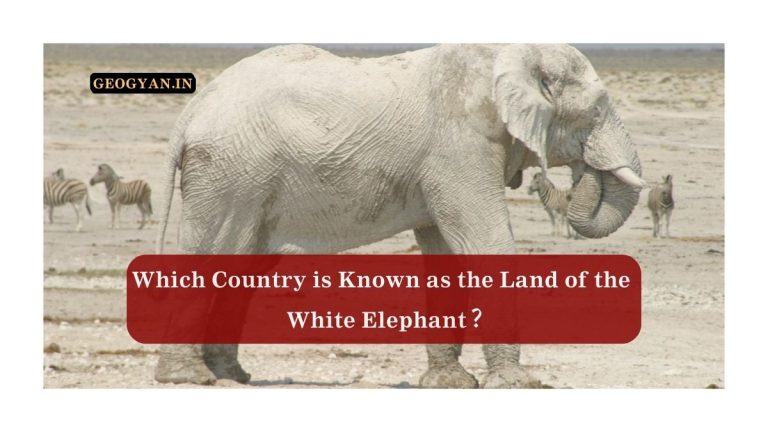Access the latest NCERT Solutions for Class 12 Geography Chapter-4: “Human Development,” updated for 2024-2025. Solution is designed to help students tackle difficult questions with ease. The content is written in simple, easy-to-understand language. Use this solution to prepare for board exams and achieve excellent results.
Exercise
1. Choose the right answer from the four alternatives given below:
(i) Which one of the following best describes development?
A) an increase in size
B) a constant in size
C) a positive change in quality
D) a simple change in the quality
Answer: C) a positive change in quality
(ii) Which one of the following scholars introduced the concept of Human Development?
A) Prof. Amartya Sen
B) Ellen C. Semple
C) Dr Mahabubul Haq
D) Ratzel
Answer: C) Dr Mahabubul Haq
Answer the following questions in about 30 words
(i) What are the three basic areas of human development?
Answer: The three basic areas of human development are:
1. Health: Ensuring a long and healthy life.
2. Education: Access to knowledge.
3. Access to resources: Ensuring people have the resources to live a decent life.
(ii) Name the four main components of human development?
Answer: The four main components of human development are:
1. Equity: Equal access to opportunities.
2. Sustainability: Continuity of access to opportunities across generations.
3. Productivity: Productivity of human labor and improving capabilities.
4. Empowerment: Enabling individuals to make choices.
(iii) How are countries classified on the basis of the Human Development Index (HDI)?
Answer: Countries are classified into four categories based on their Human Development Index (HDI) scores:
1. Very High Human Development: HDI score above 0.800.
2. High Human Development: HDI score between 0.700 and 0.799.
3. Medium Human Development: HDI score between 0.550 and 0.699.
4. Low Human Development: HDI score below 0.549.
Answer the following questions in not more than 150 words
(i) What do you understand by the term human development?
Answer: Human development refers to the process of enlarging people’s choices and improving their quality of life. It is not just focused on economic growth but also on the wellbeing of individuals, measured by factors such as health, education, and access to resources. Human development prioritizes providing individuals with the capabilities to lead meaningful lives, participate in society, and achieve their personal goals. It emphasizes creating conditions for a long, healthy, and dignified life, ensuring individuals have equal opportunities and freedoms.
(ii) What do equity and sustainability refer to within the concept of human development?
Answer: Equity in human development refers to providing equal access to opportunities for all individuals, regardless of gender, race, income, or social status. It emphasizes the need to eliminate discrimination and ensure that marginalized groups have the same opportunities as others.
Sustainability refers to maintaining the availability of opportunities over time, ensuring that future generations have the same access to resources and opportunities as the current generation. It calls for the responsible use of resources to ensure long term benefits for society.
Other important short questions
Based on Chapter 4 from the NCERT Class 12 book titled “Human Development,” here are some important short answer type questions with their answers, focusing on key concepts often asked in previous years’ 12th exams and the UPSC.
1. What is the difference between growth and development?
Ans. Growth refers to quantitative changes, which can be either positive or negative. It is value neutral. Development, on the other hand, refers to qualitative improvements and is always value positive. Development occurs only when positive growth is accompanied by improvements in living standards, education, and health.
2. Who introduced the concept of Human Development and what does it focus on?
Ans. The concept of Human Development was introduced by Dr. Mahbubul Haq, with significant contributions from Prof. Amartya Sen. It focuses on enlarging people’s choices to lead long, healthy, and meaningful lives. Human development is centered on people, emphasizing access to education, health, and resources.
3. What are the four pillars of Human Development?
Ans. The four pillars of Human Development are:
1. Equity – Ensuring equal access to opportunities for everyone, regardless of gender, race, or social status.
2. Sustainability – Ensuring that opportunities are available to future generations without depleting resources.
3. Productivity – Improving human labor productivity by building capabilities such as health and education.
4. Empowerment – Giving people the power to make choices through good governance and increasing freedoms.
4. What does the Human Development Index (HDI) measure?
Ans. The HDI measures a country’s achievements in three key areas:
1. Health – Life expectancy at birth.
2. Education – Adult literacy rate and gross enrollment ratio.
3. Standard of living – Purchasing power, measured in U.S. dollars.
The HDI score ranges from 0 to 1, with higher scores indicating better human development.
5. What is the Human Poverty Index (HPI)?
And. The HPI is an income based measure that focuses on the shortfalls in human development. It takes into account factors like the probability of not surviving until age 40, adult illiteracy rates, lack of access to clean water, and the number of underweight children.
6. What is meant by ‘sustainability’ in Human Development?
Ans. Sustainability in human development refers to the continuity of opportunities for future generations. It emphasizes the responsible use of environmental, financial, and human resources so that these opportunities are not diminished for future generations.
7. How does Amartya Sen’s concept of development differ from traditional views?
Ans. Amartya Sen’s concept of development emphasizes the increase in individual freedoms and reducing “unfreedom” as the core of development. According to Sen, enhancing freedom is not just the objective of development but also the means to achieve it. His work highlights the role of political and social institutions in fostering development.
8. How does the welfare approach to human development differ from the capability approach?
Ans. The welfare approach views people as passive recipients of welfare programs, where the government maximizes expenditures on social sectors like education and health. The capability approach, associated with Amartya Sen, focuses on building people’s abilities in health, education, and access to resources, enabling them to make choices and enhance their freedom.
9. What are the key components of Human Development?
Ans. The key components of Human Development are:
1. Health – Ensuring people can live long, healthy lives.
2. Education – Providing access to knowledge.
3. Access to resources – Ensuring people have the resources needed for a decent standard of living.
10. What role does equity play in Human Development?
Ans. Equity ensures that everyone, regardless of their gender, race, income, or caste, has equal access to opportunities. It helps to bridge gaps in society by addressing discrimination and unequal access to education, healthcare, and employment, ensuring a fair distribution of resources and opportunities.
MCQs
Based on Chapter 4 from the NCERT Class 12 book titled “Human Development,” here are 20 MCQs suitable for both Class 12 exams and UPSC preparation. Answers are provided at the end.
1. What is the primary difference between growth and development?
A) Growth is qualitative; development is quantitative
B) Growth is quantitative; development is qualitative
C) Growth is related to economic factors; development is social
D) There is no difference
2. Who introduced the concept of Human Development?
A) Prof. Amartya Sen
B) Dr. Mahbubul Haq
C) Karl Marx
D) Milton Friedman
3. What does the Human Development Index (HDI) primarily measure?
A) Economic growth
B) Human development in health, education, and income
C) Military strength
D) Geographic size
4. Which of the following is not considered a key aspect of human development?
A) Health
B) Education
C) Population size
D) Access to resources
5. A country with a Human Development Index score above 0.800 is classified as:
A) Low human development
B) Medium human development
C) High human development
D) Very high human development
6. The four pillars of human development are:
A) Education, health, employment, and environment
B) Equity, sustainability, productivity, and empowerment
C) Growth, infrastructure, technology, and resources
D) Economy, society, culture, and governance
7. Which approach to human development focuses on providing basic needs such as health and education?
A) Income approach
B) Welfare approach
C) Basic needs approach
D) Capabilities approach
8. Which index measures the shortfall in human development?
A) Human Development Index
B) Human Poverty Index
C) Quality of Life Index
D) Economic Freedom Index
9. Which of the following countries is ranked highest in the Human Development Index as of 2020?
A) India
B) Norway
C) China
D) Brazil
10. What does “equity” refer to in the context of human development?
A) Economic growth
B) Equal access to opportunities
C) Gender inequality
D) Social hierarchy
11. The capabilities approach is associated with which economist?
A) Dr. MahbubulHaq
B) Amartya Sen
C) Adam Smith
D) John Maynard Keynes
12. Which of the following statements about sustainability is true?
A) It refers to the immediate availability of resources
B) It requires depleting resources for current gains
C) It ensures future generations have the same opportunities
D) It is irrelevant to human development
13. Countries with low levels of human development often spend more on:
A) Education
B) Healthcare
C) Defense
D) Infrastructure
14. A meaningful life in the context of human development includes:
A) Wealth accumulation
B) Long life without purpose
C) Health, knowledge, and freedom
D) High status in society
15. Which of the following is a characteristic of countries with high human development?
A) Low investment in social sectors
B) Political instability
C) High levels of education and healthcare
D) Limited freedoms
16. The Human Development Report is published by:
A) World Bank
B) United Nations Development Programme (UNDP)
C) International Monetary Fund (IMF)
D) World Health Organization (WHO)
17. The “minimum needs approach” emphasizes:
A) High income as the key to development
B) Satisfaction of basic human needs
C) Increasing wealth in a country
D) Political freedom as a necessity
18. Which of the following countries has a Human Development Index score below 0.549?
A) Norway
B) Bhutan
C) Democratic Republic of Congo
D) Japan
19. The term “productivity” in human development refers to:
A) Increase in economic output only
B) Human labor productivity
C) Technological advancements
D) Population growth rate
20. Gross National Happiness (GNH) is a measure used by which country?
A) India
B) Bhutan
C) Nepal
D) Japan
Answers:
1. B) Growth is quantitative; development is qualitative
2. B) Dr. Mahbubul Haq
3. B) Human development in health, education, and income
4. C) Population size
5. D) Very high human development
6. B) Equity, sustainability, productivity, and empowerment
7. C) Basic needs approach
8. B) Human Poverty Index
9. B) Norway
10. B) Equal access to opportunities
11. B) Amartya Sen
12. C) It ensures future generations have the same opportunities
13. C) Defense
14. C) Health, knowledge, and freedom
15. C) High levels of education and healthcare
16. B) United Nations Development Programme (UNDP)
17. B) Satisfaction of basic human needs
18. C) Democratic Republic of Congo
19. B) Human labor productivity
20. B) Bhutan
Other Chapter
| Chapter 1:- Human Geography: Nature and Scope | Chapter 2:- The World Population: Distribution, Density and Growth |
| Chapter 3:- Population Composition | Chapter 5:- Primary Activities |
| Chapter 6:- Secondary Activities | Chapter 7:- Tertiary and Quaternary Activities |
| Chapter 8:- Transport and Communication | Chapter 9:- International Trade |
| Chapter 10:- Human Settlements |





























